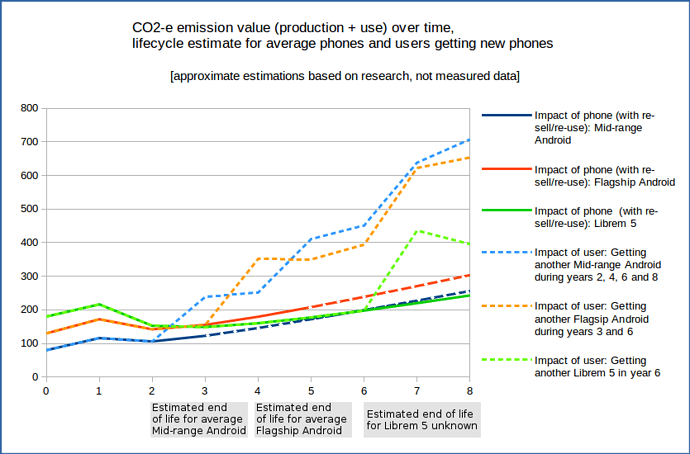@amosbatto I took another look at the graph and noticed, I’d made a mistake that made Flagship Android seem better than it was. I also updated the averages of getting a new phone, which were worse for Androids (and I used maybe a bit optimistic average for L5 users getting a new one, but the difference is, we should not have to, though). That also led me to rename the lines: the solids are in fact about the phones and then there is what users will (have to) do. It is partly about selection, what consumer choices one makes, but short lifespan phones definitely force towards a bad path.
(edit: and now that I look at it, I notice that all phones have a slight cumulative error as extra usage is added to user line, but that is on all and overall does not change - will come back to this when there is more actual data, someday)
